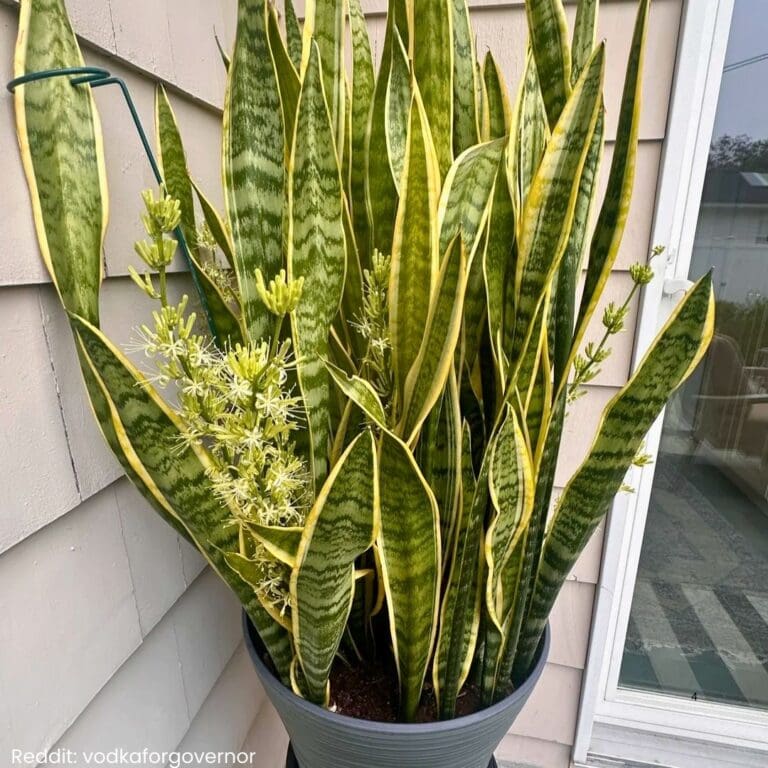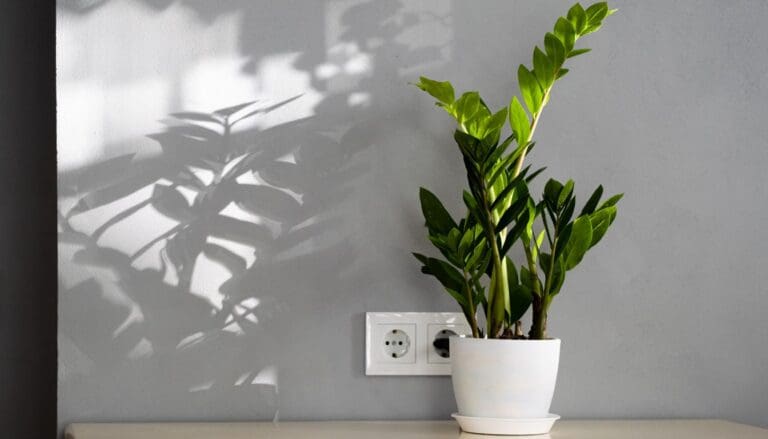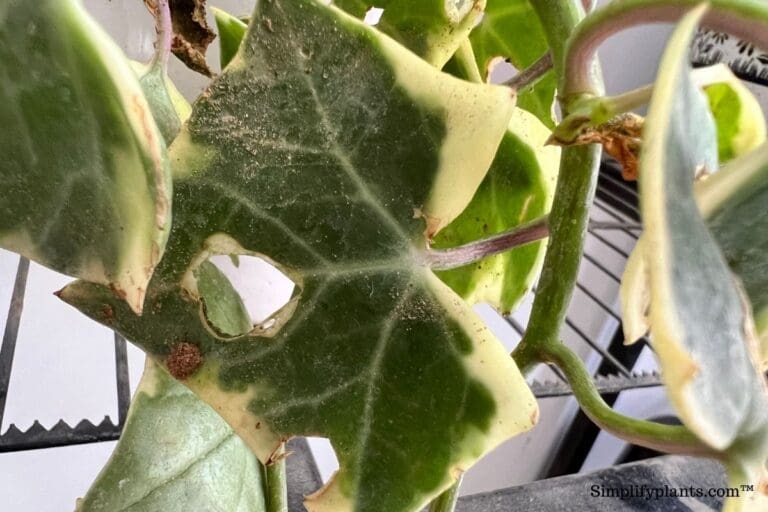Do Alocasia Like Humidity? (Ideal Humidity+How To Maintain)
Have you ever wondered if Alocasia plants like humidity and how to keep it at the right level? In this blog, we will explore whether Alocasias enjoy humidity and the best ways to maintain their ideal level.
Alocasia prefers high humidity levels as it is ideal for their growth. When the humidity level is inadequate, misting the plant will temporarily raise the humidity. But for a long-term solution, you can install a humidifier, use a pebble tray, or group the Alocasia with other plants.
While many enthusiasts consider humidity to increase the humidity levels around their plant, many prefer other ways to increase it.
If you want to mist your Alocasia and learn if the plant will like it, read this article as I will cover everything you need to know about misting your Alocasia.

Please note: Simplify Plants is reader-supported. Some links in the post are affiliate links and I get a commission from purchases made through links in the post.
Does Alocasia like to be misted?
Misting is not mandatory for the Alocasia plant, but it will enjoy it if you mist it.
Misting will benefit the plant if you plan to clean its leaves.
Misting and cleaning the leaves will allow the plant to photosynthesize more and function efficiently.
Misting with a Neem oil solution will also be helpful as it will prevent pests and diseases.
However, if your reason behind misting is raising the humidity levels around the plant, it will not be effective.
Misting raises the humidity for a short while, and to provide humidity throughout the day, you will need to mist the plant multiple times.
If the humidity level is below 40 to 50%, misting will not help the Alocasia as the water evaporates and makes the plant dry out fast.
But if the humidity level is already high, misting can cause various problems to your plant.
Should I mist my Alocasia?
Before you decide if you want to mist your Alocasia, let’s look at the different opinions around it.
You can come up with a better decision after reviewing the opinions of those who support misting and those who don’t.
| Misting supporters | Misting Opponents |
|---|---|
| Misting raises the humidity levels quickly. | Misting increases humidity only for the short term. |
| Misting helps to clean the leaves. | Misting can damage the leaves if water droplets don’t evaporate |
| Misting with a neem oil prevents pest infestations and fungal growth. | Misting can cause fungal diseases and pest infestations. |
Now, you might be able to understand the benefits and disadvantages of misting your Alocasia.
If you are still unable to decide, here is what I recommend.
- First, do not depend on misting to raise the humidity around your Alocasia.
- If you want to mist, do it with a Neem oil solution at least once a month to prevent pest infestations.
- Avoid misting too frequently, as it can cause various problems.
- Always mist your Alocasia in the morning or day so the water droplets can evaporate without causing any bacterial or fungal disease.
- Avoid misting on a gloomy or rainy day, as the water droplets will not evaporate due to lack of sunlight and will remain on the leaves longer.
- You should mist it with water at room temperature, as hot or cold water can stress your plant.
Keep these points in mind while misting your Alocasia so that the plant can draw all the benefits from it.

Does Alocasia like humidity?
Alocasia belongs to the tropical and subtropical regions of Asia and Australia.
These regions provide high humidity to these plants, which also helps grow the plant.
When you keep this plant indoors, you must provide 50 to 60% humidity to keep them happy.
If the humidity levels drop below 40%, your Alocasia will face issues.
Due to the increased transpiration rate, the plant and its leaves will lose moisture quickly and fail to grow optimally.
Therefore, you should not let the humidity levels drop below 40% and maintain the ideal range to avoid stressing your plant.
How to check the humidity level around Alocasia?
Sometimes, people don’t understand the humidity levels of their houses or around their plants because they don’t know how to check it.
However, measuring the humidity is an easy process thanks to the hygrometer.
Many portable hygrometers are available in the market, with which you can check both the humidity and the temperatures around your plant.
If the humidity level is within the ideal range for your Alocasia, you will not need to do anything to raise the humidity, but you can mist the plant occasionally.
However, if the humidity level is low, you must raise it to help your plant thrive.
How much humidity does Alocasia need?
Alocasia will require humidity levels between 50-60% to thrive.
Since they belong to high-humidity tropical areas, they will not enjoy low humidity levels below 40%.
If your Alocasia doesn’t get enough humidity, it will develop various problems.l
Signs your Alocasia needs more humidity

Low humidity is a significant problem, especially for tropical plants.
If your Alocasia is not getting enough humidity, it will show signs.
If you encounter any of these signs, you should check the humidity level and determine if it is sufficient for your Alocasia.
- Yellow leaves
- Curling leaves
- Brown spots on leaves
- Crispy foliage
- Droopy foliage
- Discoloration of leaves
- Dehydrated and dull plant
Use the hygrometer to check the humidity level, and if it is low, get ready to take some action and increase it.
You must be more careful when the humidity levels drop drastically during the winter months.
Misting will not be helpful in this situation as it will neither provide enough humidity to the plant nor make the water droplets dry fast, leading to bacterial and fungal growth.
You might have heard of a pebble tray, as this is another popular way of increasing the humidity around your houseplants.
To prepare a pebble tray, you must use the following:
- A tray
- Pebbles
- Water
You need to take the tray and arrange some pebbles on it.
Then, you need to add water to the tray and place your Alocasia on it.
Make sure that the water doesn’t reach the drainage holes.
As the water evaporates due to heat, it will raise the humidity levels around your plant.
Some people also suggest keeping bowls filled with water around your Alocasia to increase the humidity.
These might seem easy, but these are not practical solutions to increasing humidity, as, on days when the water evaporates fast, you will need to pour water again and again to keep up.
Therefore, let’s find out some practical ways of raising the humidity around your Alocasia.
How to increase the humidity for Alocasia?
You can increase the humidity for Alocasia with any of the following methods, as these are practical and long-term solutions to low humidity.
I have used these methods, which have worked great for my Alocasia.
1. Get a humidifier

Installing a humidifier is the most efficient way of increasing the humidity levels around your Alocasia.
A humidifier is a small and portable device that can increase the humidity levels inside a room.
If you already have a humidifier, you can place your Alocasia near it.
Or you can purchase one and place it near your Alocasia and other humidity-loving plants.
You can’t go wrong with a humidifier; the best feature is that you can control the humidity levels you want.
You can set the level, and the humidifier will provide that humidity level to your Alocasia.
2. Make use of your aquarium
An aquarium can provide many benefits to your Alocasia.
Other than using the water to fertilize the plant, you can use the aquarium to increase the humidity around the plant.
You can also consider getting one if you don’t have it already.
An aquarium works similarly to a pebble tray or a bowl of water.
But it is much more effective than them.
The water of the aquarium evaporates and adds humidity around it.
If you keep your Alocasia near the aquarium, it will also receive the required humidity.
An aquarium can increase the humidity levels by at least 5% more than a pebble tray.
3. Build a mini greenhouse
In the nurseries, plants are kept in greenhouses, so they get the ideal living conditions and high humidity levels, similar to their native lands.
Now, you can also create a mini-greenhouse inside your home to provide more humidity to your plants.
You can either buy one, as there are a variety of mini-greenhouses available online, or you can DIY a mini-greenhouse for your Alocasia.
4. Relocate your Alocasia
Relocating the plant is a good way to increase the humidity levels around it.
You can move your Alocasia to the bathroom, kitchen, or basement, as these rooms have higher humidity levels than most other house rooms.
However, if you opt for this method, you need to ensure that the plant gets all the appropriate conditions in these rooms before you relocate it.
If you keep your Alocasia in a bathroom, you should not splash water on it, and if you take it to the kitchen, you must not expose it to any heating source.
5. Group your Alocasia with other plants

Many people like to put their humidity-loving plants together to increase the humidity levels in that area.
So, you can put your Alocasia together with other moisture-loving plants, which should take care of its humidity requirements.
When the plants transpire, they release a small amount of moisture into the air.
When all the plants transpire, they release a significant amount of moisture, increasing the humidity around the Alocasia and other plants.
There might be one hazard to this: grouping the plants too close to each other can restrict airflow.
So, you should ensure that there is proper airflow when you are grouping the plants.
Final words
Misting is a good way of cleaning the leaves, increasing the humidity levels for a short while, and using neem oil while misting to keep the pest away. But, you should not depend solely on misting to increase the humidity levels around your Alocasia.
If you want to increase the humidity for your Alocasia effectively, you should:
- Use a humidifier
- Relocate the plant to the bathroom, kitchen, or basement
- Group the plant with humidity-loving plants
- Use a mini-greenhouse
- Keep your Alocasia near an aquarium
Along with these, you should avoid exposing your Alocasia to the direct air of the AC, heating sources, and hot or cold drafts that can dry out the plant.

Reference: Alocasia sanderiana, Alocasia micholitziana.
Recommended Garden Supplies
| Product Image | Our Recommended Gardening Supplies | Check Offers! |
|---|---|---|
Top Top
Top
Top
Top
Top
Top
Top
Top | rePotme Houseplant and Tropical Classic Potting Soil Mix | Check Offer On Amazon |
 Top
Top
Top
Top
Top
Top
Top
Top | Espoma Organic Indoor Plant Food | Check Offer On Amazon |
 Top
Top
Top
Top
Top
Top
Top
Top | GooingTop LED Grow Light 6000K Full Spectrum Clip Plant Growing Lamp | Check Offer On Amazon |
 Top
Top
Top
Top
Top
Top
Top
Top | Soil Moisture Meter | Check Offer On Amazon |
 Top
Top
Top
Top
Top
Top
Top
Top | Govee Hygrometer Thermometer, Bluetooth Enabled! | Check Offer On Amazon |
 Top
Top | LEVOIT Humidifiers for Large Room(Best For Plants) | Check Offer On Amazon |
 Top
Top
Top
Top
Top
Top
Top
Top | Upgraded DIY Automatic Drip Irrigation Kit, 15 Potted Houseplants Support | Check Offer On Amazon |
 Top
Top
Top
Top
Top
Top
Top
Top | Stainless Steel Heavy Duty Gardening Tool Set | Check Offer On Amazon |
 Top
Top
Top
Top
Top
Top
Top
Top | Bonide Insecticidal Soap | Check Offer On Amazon |
 Top
Top
Top
Top
Top
Top
Top
Top | Bonide 32 oz Spray Neem Oil for Organic Gardening | Check Offer On Amazon |
 Top
Top
Top
Top
Top
Top
Top
Top | Garden Safe Fungicide | Check Offer On Amazon |






